
The "demo_ods_assoc_spfi data source referenced in line #4 contains a field "connid" which you would like to expose in the element list.
Which of the following statements would do this if inserted on line #8?
Exhibit
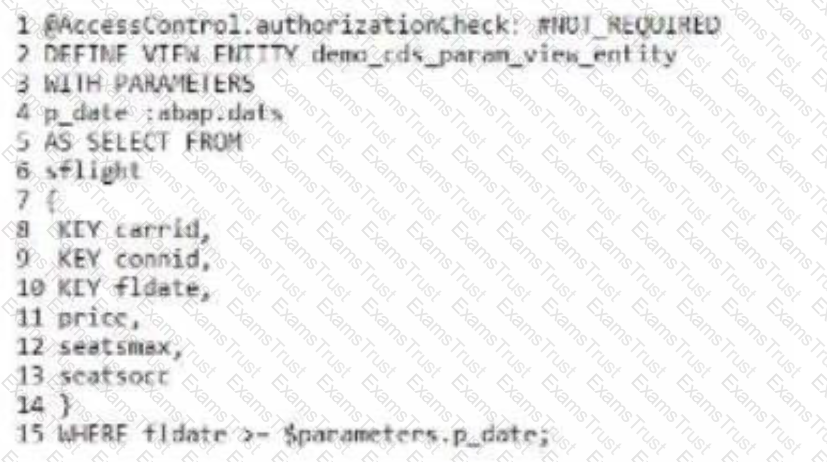
Which of the following ABAP SQL snippets are syntactically correct ways to provide a value for the parameter on line #4? Note: There are 2 correct answers to this question
Setting a field to read-only in which object would make the field read-only in all applications of the RESTful Application Programming model?
Which extensibility type does SAP recommend you use to enhance the existing UI for an SAP Fiori app?
As a consultant you are posed the following question from a client who is using SAP S/4HANA Cloud,
public edition and also SAP BTP, ABAP environment.
"We are currently using an SAP Fiori app based on SAP Fiori elements that analyzes open orders. We
have determined that it should be extended via a new button on the UI which will perform an on-
the-fly calculation and display the result in a quick popup for the enduser. We have been informed by
SAP that all underlying stack layers for the SAP Fiori app have been extensibility enabled."
Based on this which of the following extension types would you recommend to the customer to add
the new button?
What are advantages of using a field symbol for internal table row access? Note: There are answers to this question.
In which products must you use the ABAP Cloud Development Model? Note: There are 2 correct answers to this question.
Which RESTful Application Programming object can be used to organize the display of fields in an app?
Given the Code:
INTERFACE if1.
METHODS m1.
ENDINTERFACE.
CLASS cl1 DEFINITION.
...
INTERFACES if1.
ENDCLASS.
CLASS cl2 DEFINITION.
...
DATA mo_if1 TYPE REF TO if1.
ENDCLASS.
What are valid statements? (Note: There are 3 correct answers to this question.)
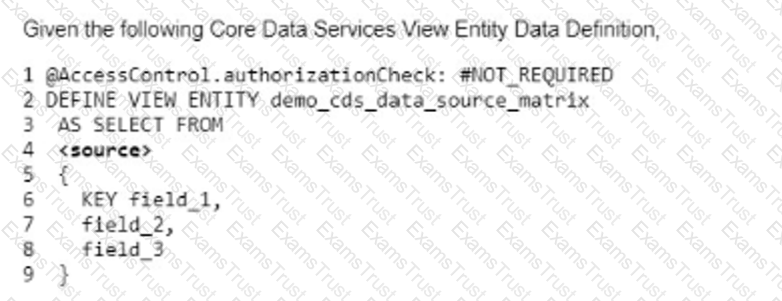
Which of the following types are permitted to be used for
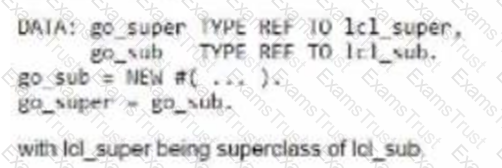
When accessing the subclass instance through go_super, what can you do? Note: There are 2 correct answers to this question.
In RESTful Application Programming, a business object contains which parts? Note: There are 2 correct answers to this question.
You have two internal tables itab1 and itab2.What is true for using the expression itab1 = corresponding #( itab2 )? Note: There are 2 correct answers to this question.
What would be the correct expression to change a given string value 'mr joe doe' into 'JOE' in an ABAP SQL field list?
Given the following code in an SAP S/4HANA Cloud private edition tenant:
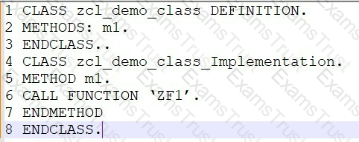
The class zcl_demo_class is in a software component with the language version set to "ABAP Cloud". The function module ZF1' is in a different software component with the language version set to "Standard ABAP". Both the class and function module are customer created.
Regarding line #6, which of the following are valid statements? Note: There are 2 correct answers to this question.
In an Access Control Object, which clauses are used? Note: There are 3 correct answers to this question.
Which of the following ABAP SQL statements are valid? Note: There are 2 correct answers to this question.
Which of the following integration frameworks have been released for ABAP cloud development? Note: There are 3 correct answers to this question.
When processing a loop with the statement DO... ENDDO, what system variable contains the implicit loop counter?
What are some properties of database tables? Note: There are 2 correct answers to this question.
In ABAP SQL, which of the following retneves the association field _Airline-Name of a CDS view?
Class super has subclass sub. Which rules are valid for the sub constructor? Note: There are 2 correct answers to this question.
You have a superclass superl and a subclass subl of superl. Each class has an instance constructor and a static constructor. The first statement of your program creates an instance of subl. In which sequence will the constructors be executed?
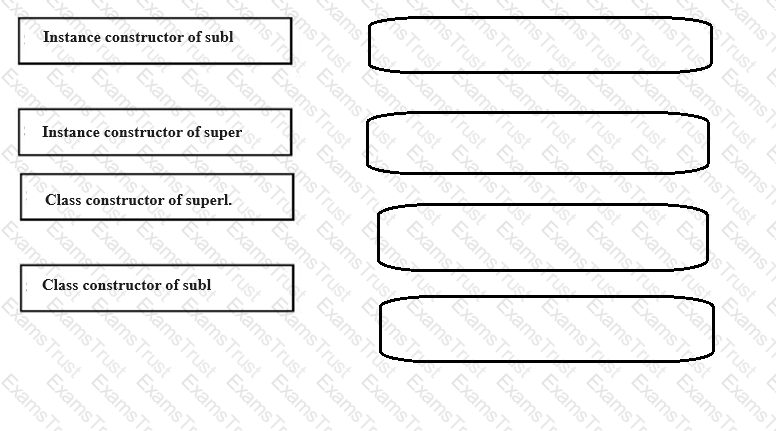
Which of the following actions cause an indirect change to a database table requiring a table conversion? Note: There are 2 correct answers to this question.